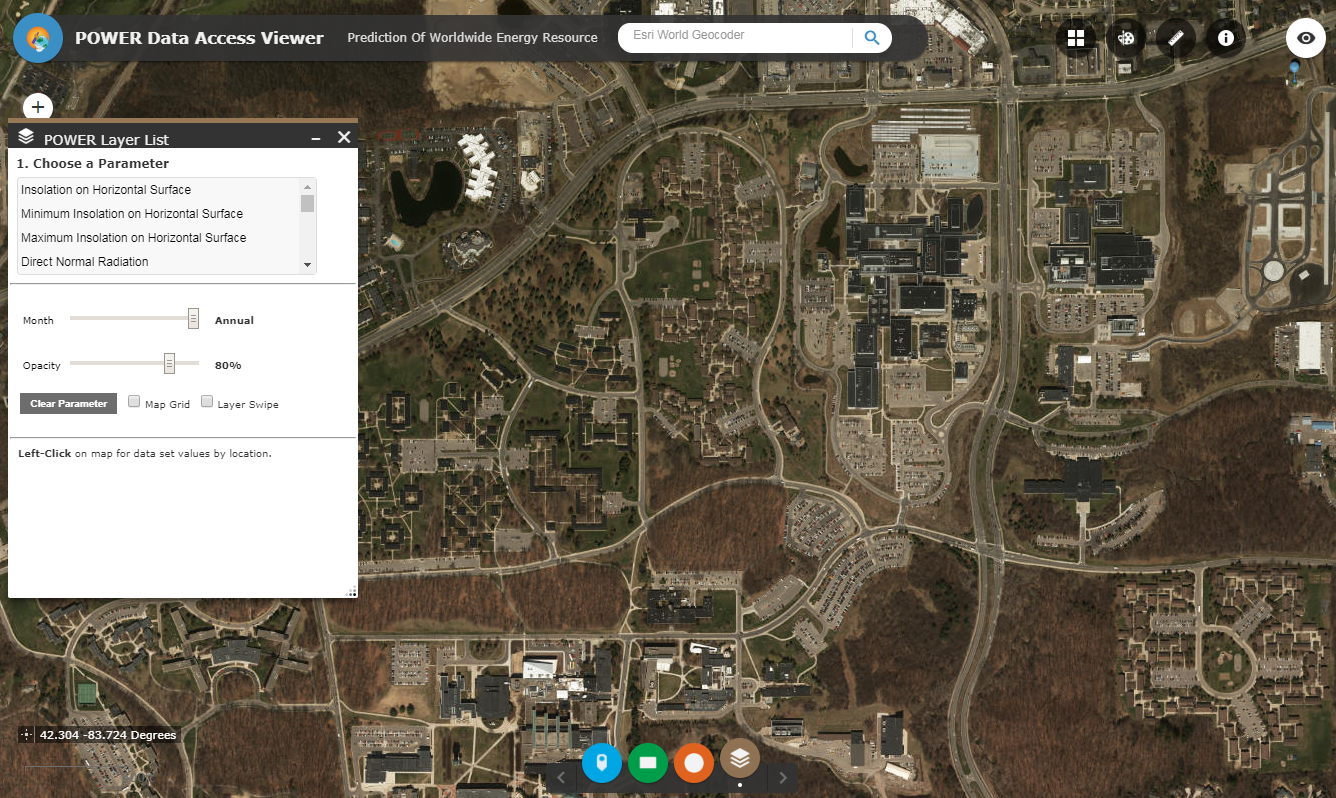The University of Michigan (U-M) is going green to help its home city of Ann Arbor through dedicated, sustainable practices – such as recycling, composting and reducing greenhouse gas emissions. Energy management teams used a free, clean-energy management software platform that incorporates NASA weather and climate data to help reduce energy consumption in more than 150 buildings on campus.
In 2011, U-M established six sustainability goals, including reducing its greenhouse gas emissions by 25% by 2025. That’s where Kevin Morgan and his colleagues come in. As part of the Office of Campus Sustainability at U-M, the energy management team focuses on reducing the energy consumed by more than 150 buildings on campus – from classrooms to research laboratories and performance venues.
“We monitor the buildings to identify any excursions from normal operations on a monthly basis,” said Morgan. “We also develop projects that both tune up building systems and upgrade existing systems to increase efficiency, such as LED upgrades, occupancy sensors to control lighting and HVAC.”
To help guide their projects, Morgan and his colleagues have been using NASA Earth-observing data, which they access through a free, clean-energy management software platform called RETScreen from Natural Resources Canada.
Dinesh Parakh, program advisor for RETScreen International, explained, “RETScreen taps into NASA's POWER (Prediction of Worldwide Energy Resource) data to ensure that accurate, global climate and weather information is available for RETScreen modelling … NASA’s weather and climate data are fully integrated into RETScreen, and NASA data has come to be seen as a defining feature of the software.”
POWER is the result of an Earth Applied Sciences project based at NASA’s Langley Research Center in Hampton, Virginia. POWER was initiated to improve renewable energy data sets and create new data sets from the latest satellite systems. It brings the wider perspective of remote sensing into energy management while filling the need for more complete and up-to-date data.
“The POWER data set is a tremendously useful alternative when ground-based data or detailed resource maps are not available for the project location,” Parakh remarked. “Users also appreciate the fact that the weather data is ‘near real-time’ – current to 1-2 days under normal circumstances.”
Powered by POWER, RETScreen has become a regular asset for guiding U-M’s energy management. “RETScreen provides a monthly weather-regression baseline for all of our campus buildings that we can use regularly to identify when buildings are consuming more energy than they should be,” Morgan emphasized. “This is a critical ability to be proactive in our pursuit for energy conservation.”
The dedication of Morgan and his team paid off. “Our energy management efforts are having a real impact in the buildings we work in. Over the last 12 years, even though building floor space has grown by more than 13%, U-M has been able to reduce overall energy use by more than 15%. This is a significant accomplishment and helps set the stage for future improvements,” he said.
“NASA’s weather and climate data are fully integrated into RETScreen, and NASA data has come to be seen as a defining feature of the software.”
–Dinesh Parakh, RETScreen International
Parakh agreed with Morgan and added, “The University of Michigan is ahead of the curve — and ahead of its peer institutions — in recognizing the value of RETScreen for its energy management needs. They understood the sheer power of RETScreen early on.” Being a leader in innovation has had other benefits as well. In 2016, U-M received the Sustainability Award in Facilities Management by APPA: Leadership in Educational Facilities. The award recognized U-M’s sustainable policies and “green” practices throughout the institution.
“The award is the result of the countless efforts of many departments across campus to operate more sustainably and take action to further progress toward the university’s sustainability goals,” Morgan said.
Parakh stressed that the partnership with U-M has been mutually beneficial. “U-M has provided us with feedback and insight [on RETScreen] that has helped make the software better for all users.” And that list of RETScreen — and NASA POWER — users keeps growing; especially across academia. Parakh noted, “There are over 1,100 universities and colleges around the world using RETScreen for teaching, research and facilities management.”
This story is part of our Space for U.S. collection. To learn how NASA data are being used in your state, please visit nasa.gov/spaceforus.





